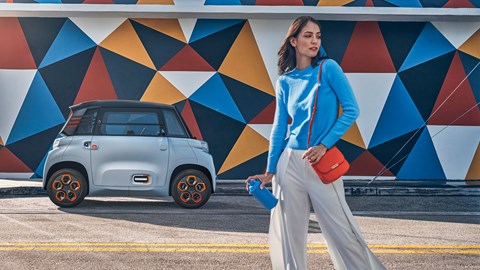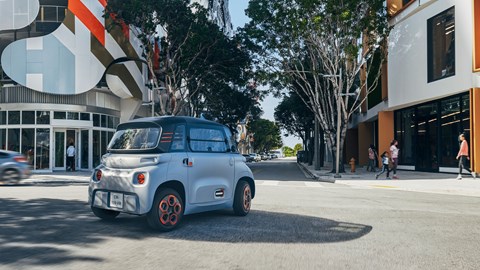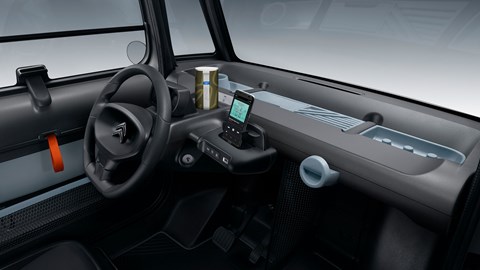► Citroen’s electrification plan rolled out from 2020
► Confirmed: all model lines to be electrified by 2025
► The plan, known as ‘electric for all’ begins now
Citroen’s newly-appointed CEO Vincent Cobee used the launch of the new Ami city car to spell out the beginnings of his company’s electrification strategy. With overall sales of just under a million in 2019, and growth in its major markets – excluding China – Citroen is being bullish about the future of electrification under the banner, ‘electric for all’.
The background to this is Citroen’s plan to become a global brand (presumably excluding North America), and to sell 30% of its total output outside of Europe by 2022. Currently that stands at 15% – so it’s a stretch of a target.
The plan involves launching at scale in India by launching three product lines (kicked off by the C5 Aircross SUV – link ), and kick off a brand offensive under the name CCubed: Cool, Comfort, Clever in an attempt to differentiate it from PSA sister brand, Peugeot.

The electrification plan
Citroen’s new push is to become a ‘mobility provider’ brand for everyone. Citroen CEO Vincent Cobee said at the launch of the Ami, that the company’s history of an innovator allowed was the perfect inspiration to draw upon, citing the Citroen 2CV, Mehari and Xsara Picasso as examples of being able to democratise car use beyond what was expected at the time.
The electric Citroen Ami certainly ticks the box for being able to offer mobility for all. It’s technically a quadricycle and can be driven on the roads (in France) without a car licence. As a city car, it’s being touted as a car you can buy, rent or subscribe to on a pay-as-you-go basis. ‘We see it as unique, brave and disruptive – and everyone needs one,’ Cobee told us.
As for the rest of the car range, as well as tidying up the model range to lose the C4 Cactus, Citroen intends to offer electrified versions of all of its product lines by 2025. This includes its commercial vehicle range (which accounts for 20% of Citroen’s output currently). There will be a mix of EVs and PHEVs, although we’ve yet to have it confirmed how many mild hybrids will be in the mix yet.

Beyond the city limits
After the Citroen Ami, comes the C5 Aircross PHEV. It arrives in the UK in August after a spring launch and will be offered in front-wheel drive form only (unlike Peugeot and Vauxhall, which both get 296bhp four-wheel drive PHEVs). It’s simply badged the PHEV, and is being marketed as the Silent Utility Vehicle, with 32 miles of battery-only running available and 222bhp maximum power.
After that comes what Citroen describes as a full-electric C-segment hatchback. We’re looking at an EV version of the Golf-rivalling C4 replacement in EV form, which Cobee has confirmed will be launched at the end of 2020. The C-Hatch is likely to be based on PSA’s highly adaptable CMP1 platform, which means that the company’s ICE/EV production split can be easily varied depending on market demand. We don’t know too much about this car yet, although given the fact that Citroen’s head of design Pierre Leclercq wants it to reference the much-loved Citroen GS, which recently celebrated its 50th birthday, we can at least hope for an innovative exterior design.

Next on the agenda will be an EV version of the SpaceTourer MPV, which was also touted for the final quarter of 2020. Beyond that will come the C5 saloon replacement, which is due in 2021 and should be available in PHEV form like its Peugeot 508 and DS 9 E-Tense sister cars. Later down the line will come the C3 and C3 Aircross replacements, which will be all-new cars that sit on the same platform as the Peugeot 208 and Vauxhall Corsa. As much as they’d like to electrify Citroen’s biggest-selling range right now (240,000 C3s in 2019), it sits on an old platform.